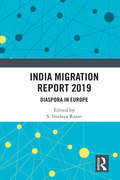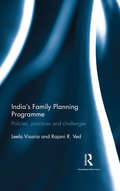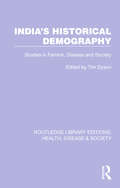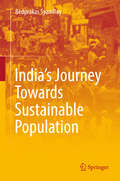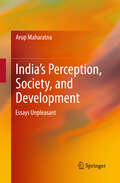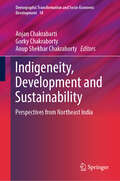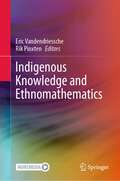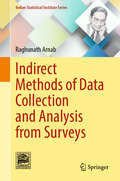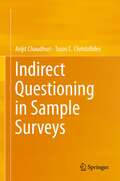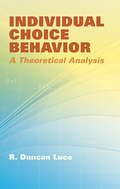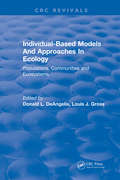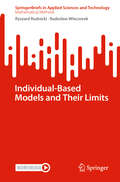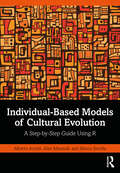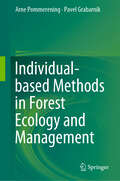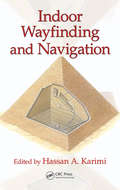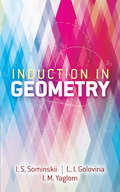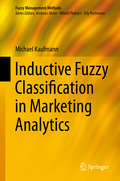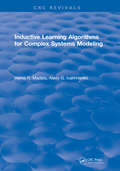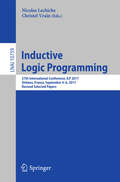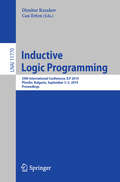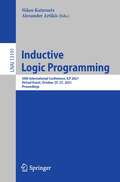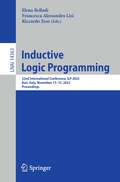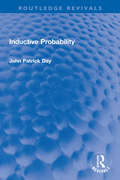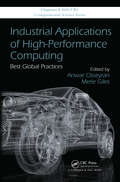- Table View
- List View
India Migration Report 2019: Diaspora in Europe
by S. Irudaya RajanIndia Migration Report 2019 examines the issues of identity related to integration in European societies. It examines the multifarious nature of social, economic and political engagements of the Indian diaspora with their host societies in Europe. This volume: assesses the historical trends in migration to Europe, mobility paths and transnational networks of skilled Indian migrants, as well as recent tendencies in movements of migrants; explores the roles of Indian migrants in transforming host societies with their skills and capabilities; highlights their contribution towards the development of their homeland through knowledge transfer, philanthropy, capital flows, remittances and investment; takes stock of the impact of recent events, especially Brexit and anti-immigrant positioning of some political parties; uses mixed research methods including ethnography, key informant interviews and in-depth case studies. The volume will be of great interest to scholars and researchers of development studies, economics, demography, sociology and social anthropology, and migration and diaspora studies.
India Migrations Reader
by S. Irudaya RajanThis volume brings together critical and landmark studies in Indian migration. Covers a range of key themes — emigration policy in countries of destination and origin, development and remittances, gender issues, impact of the global financial crisis, conflict, and inclusive growth Looks at new and emerging patterns in Indian migration Includes essays by major scholars in the field The book will be useful to scholars and researchers of development studies, migration and diaspora studies, economics and sociology. It will also interest policymakers and government institutions working in the area.
India's Family Planning Programme: Policies, practices and challenges
by Leela Visaria Rajani R. VedThis book closely examines the changes, challenges and shifts in India’s family planning programme since its inception in 1952. It discusses the dynamics of population growth, the demographic dividend, family planning and its impact on maternal and child health, and the pressures from various quarters to remove method-specific contraceptive targets from the programme. The volume highlights the shortcomings in the delivery of services by the public sector and the critical role of non-government organisations in research, promotion and advocacy. Rich in empirical data, this book will be an indispensable resource for scholars, policymakers, organisations and NGOs concerned with population and demographic studies. It will also interest those in sociology, public policy and public health.
India's Historical Demography: Studies in Famine, Disease and Society (Routledge Library Editions: Health, Disease and Society #12)
by Tim DysonWhen this book was originally published in 1989 here had been virtually no studies of the country’s historical demography. This volume was significant for 3 reasons: it contributed greatly to the knowledge of India’s population history; it had major implications for the work of social and economic historians of India; and lastly the Indian context provides an excellent laboratory in which to investigate certain large-scale demographic phenomena – among others the experience of bubonic plague, influenza, cholera and famine.
India's Journey Towards Sustainable Population
by Bedprakas SyamroyThis book makes a thorough investigation of the population problem issues in India from diverse angles- demographic, policy and programme. Discussing the theoretical background of population control, the book also deals with all mundane issues - social, cultural, religious, legal and health issues, and attempts to capture the state of preparedness of India to reach sustainable population. It is a valuable resource for students of population studies and academics working on population control and management. Additionally, it is also a useful reference work for trainees at national academies, journalists, family welfare service providers and the civil society groups working on population control and family planning.
India’s Perception, Society, and Development: Essays Unpleasant
by Arup MaharatnaThere has been, of late, a growing realisation that the pace and pattern of economic development of a country can hardly be understood and explained comprehensively in terms of the straitjacket of economics discipline alone. India is a prime example of the importance of the part played by a country's history, culture, sociology, and socio-cultural-religious norms, values, and institutions in its development process. This book, with its assorted essays of varying depths of scholarship and insightful reflections, attempts to drive home this point more forcefully than ever before. In its search for the non-economic roots of India's overall sloth and murky progress in its broad-based economic and human development, the book illuminates major oddities deep inside a unique mental make-up full of perceptual and ideational dilemmas, many of which are arguably shaped by the long-lasting and dominant influence of what could be called the Brahminical lines of thinking and discourse. With India's hazy and dodgy world of perceptions as a backdrop, the book also addresses - through its intelligent essays - the deep and sometimes dire ramifications of the historic advent and the dramatic advance of neoliberal market ideology today.
Indigeneity, Development and Sustainability: Perspectives from Northeast India (Demographic Transformation and Socio-Economic Development #18)
by Anjan Chakrabarti Gorky Chakraborty Anup Shekhar ChakrabortyThis volume presents cutting-edge research on India's Northeast region relating to borders, material mobilities, contested identities, and economic and political dynamics. It offers a comprehensive understanding of the developmental challenges currently faced by Northeast India, including the complexities of the labor market and the neoliberal economy. The book highlights the lived experiences of individuals in varied geographies and perspectives. It is organized into five sections, each addressing the region's old and vexed questions of 'development', and its complicated relationship with indigeneity and sustainability. Contributions from scholars of various disciplines provide an all-inclusive picture of the region, ranging from a macro to a micro level. Interdisciplinary in nature, the book interests a cross-section of academics and graduate students from different disciplines, including sociology, social anthropology, economics, political science, human geography, history, public policy, and development studies.
Indigenous Knowledge and Ethnomathematics
by Rik Pinxten Eric VandendriesscheThe book presents a series of ethnographic studies, which illustrate issues of wider importance, such as the role of cultural traditions, concepts and learning procedures in the development of formal (or mathematical) thinking outside of the western tradition. It focuses on research at the crossroads of anthropology and ethnomathematics to document indigenous mathematical knowledge and its inclusion in specific cultural patterns. More generally, the book demonstrates the heuristic value of crossing ethnographical, anthropological and ethnomathematical approaches to highlight and analyze—or "formalize" with a pedagogical outlook—indigenous mathematical knowledge.The book is divided into three parts. The first part extensively analyzes theoretical claims using particular ethnographic data, while revealing the structural mathematical features of different ludic, graphic, or technical/procedural practices in their links to other cultural phenomena. In the second part, new empirical studies that add data and perspectives from the body of studies on indigenous knowledge systems to the ongoing discussions in mathematics education in and for diverse cultural traditions are presented. This part considers, on the one hand, the Brazilian work in this field; on the other hand, it brings ethnographic innovation from other parts of the world. The third part comprises a broad philosophical discussion of the impact of intuitive or "ontological" premises on mathematical thinking and education in the light of recent developments within so-called indigenously inspired thinking. Finally, the editors’ conclusions aim to invite the broad and diversified field of scholars in this domain of research to seek alternative approaches for understanding mathematical reasoning and the adjacent adequate educational goals and means.This book is of interest to scholars and students in anthropology, ethnomathematics, history and philosophy of science, mathematics, and mathematics education, as well as other individuals interested in these topics.
Indirect Methods of Data Collection and Analysis from Surveys (Indian Statistical Institute Series)
by Raghunath ArnabThis book provides a chronological, comprehensive, and up-to-date review of indirect methods of data collection from the human population such as randomized response, non-randomized response, item count, item sum, nominative, and negative questioning techniques. Such surveys include questionnaires on sensitive issues such as domestic violence, the history of induced abortion, involvement in fraud, plagiarism, affiliation with political parties, opinion of government policies, and religious practices, to name a few. The book also studies methods of drawing inferences from such data. The methods provided in the book can be applied to any complex survey design and a wide class of estimators. This book may serve as a handbook of indirect survey methodologies, as readers may receive a wide spectrum of materials from this book alone. Most of the randomized response (RR) techniques are described with the aid of diagrams so that readers can easily understand the randomization techniques, their applicability, and their complexity in real surveys. Applications of different indirect survey methodologies in various areas are presented.
Indirect Questioning in Sample Surveys
by Tasos C. Christofides Arijit ChaudhuriIndirect questioning is a crucial topic in surveys of human populations. When the issue is about a stigmatizing characteristic (for example about illegal drug use), standard survey methodologies are destined to fail because, as expected, people are not willing to reveal incriminating information or information violating their privacy. Indirect questioning techniques have been devised so that the privacy of participants in a sample survey is protected and at the same time good estimates of certain parameters (e.g. the percentage of people in a certain community who use illegal drugs) can be delivered. The topic is modern and still under development. Indirect Questioning in Sample Surveys represents a collection of the most important and recent techniques of indirect questioning, including various versions of randomized response, the item count technique, the nominative technique, the three-card method, non-randomized response models and negative surveys, while also exploring the key aspect of protecting privacy.
Individual Choice Behavior: A Theoretical Analysis (Dover Books on Mathematics)
by R. Duncan LuceThis influential treatise presents upper-level undergraduates and graduate students with a mathematical analysis of choice behavior. It begins with the statement of a general axiom upon which the rest of the book rests; the following three chapters, which may be read independently of each other, are devoted to applications of the theory to substantive problems: psychophysics, utility, and learning.Applications to psychophysics include considerations of time- and space-order effects, the Fechnerian assumption, the power law and its relation to discrimination data, interaction of continua, discriminal processes, signal detectability theory, and ranking of stimuli. The next major theme, utility theory, features unusual results that suggest an experiment to test the theory. The final chapters explore learning-related topics, analyzing the stochastic theories of learning as the basic approach—with the exception that distributions of response strengths are assumed to be transformed rather than response probabilities. The author arrives at three classes of learning operators, both linear and nonlinear, and the text concludes with a useful series of appendixes.
Individual-Based Models and Approaches In Ecology: Populations, Communities and Ecosystems
by D. L. DeAngelisUntil fairly recently, populations were handled as homogenized averages, which made modeling feasible but which ignored the essential fact that in any population there is a great variety of individuals of different ages, sizes, and degrees of fitness. Recently, because of the increased availability of affordable computer power, approaches have been developed which are able to recognize individual differences. Individual-based models are of great use in the areas of aquatic ecology, terrestrial ecology, landscape or physiological ecology, terrestrial ecology, landscape or physiological ecology, and agriculture.This book discusses which biological problems individual-based models can solve, as well as the models' inherent limitations. It explores likely future directions of theoretical development in these models, as well as currently feasible management applications and the best mathematical approaches and computer languages to use. The book also details specific applications to theory and management.
Individual-Based Models and Their Limits (SpringerBriefs in Applied Sciences and Technology)
by Ryszard Rudnicki Radosław WieczorekIndividual-based models (IBM) describe a population as a collection of different organisms whose local interactions determine the behaviour of the entire population. The individual description is convenient for computer simulations and the determination of various model parameters, and appropriate limit passages lead to the transport equations used in classical population dynamics models. The aim of this book is to provide a brief mathematical introduction to IBMs and their application to selected biological topics. The book is divided into seven chapters. In the first chapter we give a general description of IBMs and we present examples of models to illustrate their possible applications. Examples of applications include age, size and phenotype models, coagulation-fragmentation process, and models of genome evolution. The second chapter contains some theoretical results concerning limit passages from IBMs to phenotype and age-structured models. The rate of this convergence formulated as functional central limit theorems is presented in Chapter 3. As a result of the limit passage can be a superprocess, i.e., a stochastic process with values in a space of measures. Chapter 4 presented examples of such passages: from the branching Brownian motion to the Dawson--Watanabe superprocess and from the Moran's model of genetic drift with mutations to the Fleming--Viot superprocess. The next three chapters are devoted to models, in which we directly participated in the study. In Chapter 5 we study IBMs phenotype models and their limit passages. We show that random mating stabilises the distribution of traits, while assortative mating can lead to a polymorphic population. Formation of aggregates of phytoplankton and their movement is studied in Chapter 6. We present two types of models based on: fragmentation-coagulation processes; and diffusion with chemical signals leading to advanced superprocesses. Chapter 7 is devoted to rather advanced models with chemotaxis used to description of retinal angiogenesis and cell proliferations. The book is complemented by two appendices in which we have collected information about stochastic processes and various spaces we have used. The book is dedicated both to mathematicians and biologists. The first group will find here new biological models which leads to interesting and often new mathematical questions. Biologists can observe how to include seemingly different biological processes into a unified mathematical theory and deduce from this theory interesting biological conclusions. Apart from the sections on superprocesses, where quite advanced mathematical issues arise, such as stochastic partial equations, we try to keep the required mathematical and biological background to a minimum so that the topics are accessible to students.
Individual-Based Models of Cultural Evolution: A Step-by-Step Guide Using R
by Alex Mesoudi Alberto Acerbi Marco SmollaIndividual-Based Models of Cultural Evolution shows readers how to create individual-based models of cultural evolution using the programming language R. The field of cultural evolution has emerged in the last few decades as a thriving, interdisciplinary effort to understand cultural change and cultural diversity within an evolutionary framework and using evolutionary tools, concepts, and methods. Given its roots in evolutionary biology, much of cultural evolution is grounded in, or inspired by, formal models. Yet many researchers interested in cultural evolution come from backgrounds that lack training in formal modelling, such as psychology, anthropology or archaeology. This book addresses that gap. It provides example code in R for readers to run their own models, moving from very simple models of the basic processes of cultural evolution, such as biased transmission and cultural mutation, to more advanced topics such as the evolution of social learning, demographic effects, and social network analysis. Features of this book: Recreates existing models in the literature to show how these were created and to enable readers to have a better understanding of their significance and how to apply them to their own research questions Provides full R code to realize models and analyse and plot outputs, with line-by-line analysis Requires no previous knowledge of the field of cultural evolution, and only very basic programming knowledge This is an essential resource for researchers and students interested in cultural evolution, including disciplines such as psychology, anthropology, archaeology, and biology as well as sociology and digital humanities.
Individual-based Methods in Forest Ecology and Management
by Arne Pommerening Pavel GrabarnikModel-driven individual-based forest ecology and individual-based methods in forest management are of increasing importance in many parts of the world. For the first time this book integrates three main fields of forest ecology and management, i.e. tree/plant interactions, biometry of plant growth and human behaviour in forests. Individual-based forest ecology and management is an interdisciplinary research field with a focus on how the individual behaviour of plants contributes to the formation of spatial patterns that evolve through time. Key to this research is a strict bottom-up approach where the shaping and characteristics of plant communities are mostly the result of interactions between plants and between plants and humans. This book unites important methods of individual-based forest ecology and management from point process statistics, individual-based modelling, plant growth science and behavioural statistics. For ease of access, better understanding and transparency the methods are accompanied by R code and worked examples.
Indoor Wayfinding and Navigation
by Hassan A. KarimiDue to the widespread use of navigation systems for wayfinding and navigation in the outdoors, researchers have devoted their efforts in recent years to designing navigation systems that can be used indoors. This book is a comprehensive guide to designing and building indoor wayfinding and navigation systems. It covers all types of feasible sensors (for example, Wi-Fi, A-GPS), discussing the level of accuracy, the types of map data needed, the data sources, and the techniques for providing routes and directions within structures.
Induction in Geometry (Dover Books on Mathematics)
by L.I. Golovina I. M. YaglomInduction in Geometry discusses the application of the method of mathematical induction to the solution of geometric problems, some of which are quite intricate. The book contains 37 examples with detailed solutions and 40 for which only brief hints are provided. Most of the material requires only a background in high school algebra and plane geometry; chapter six assumes some knowledge of solid geometry, and the text occasionally employs formulas from trigonometry. Chapters are self-contained, so readers may omit those for which they are unprepared. To provide additional background, this volume incorporates the concise text, The Method of Mathematical Induction. This approach introduces this technique of mathematical proof via many examples from algebra, geometry, and trigonometry, and in greater detail than standard texts. A background in high school algebra will largely suffice; later problems require some knowledge of trigonometry. The combination of solved problems within the text and those left for readers to work on, with solutions provided at the end, makes this volume especially practical for independent study.
Inductive Fuzzy Classification in Marketing Analytics
by Michael KaufmannTo enhance marketing analytics, approximate and inductive reasoning can be applied to handle uncertainty in individual marketing models. This book demonstrates the use of fuzzy logic for classification and segmentation in marketing campaigns. Based on practical experience as a data analyst and on theoretical studies as a researcher, the author explains fuzzy classification, inductive logic and the concept of likelihood and introduces a blend of Bayesian and Fuzzy Set approaches, allowing reasonings on fuzzy sets that are derived by inductive logic. By application of this theory, the book guides the reader towards a gradual segmentation of customers which can enhance return on targeted marketing campaigns. The algorithms presented can be used for visualization, selection and prediction. The book shows how fuzzy logic can complement customer analytics by introducing fuzzy target groups. This book is for researchers, analytics professionals, data miners and students interested in fuzzy classification for marketing analytics.
Inductive Learning Algorithms for Complex Systems Modeling
by H.R. MadalaInductive Learning Algorithms for Complex Systems Modeling is a professional monograph that surveys new types of learning algorithms for modeling complex scientific systems in science and engineering. The book features discussions of algorithm development, structure, and behavior; comprehensive coverage of all types of algorithms useful for this subject; and applications of various modeling activities (e.g., environmental systems, noise immunity, economic systems, clusterization, and neural networks). It presents recent studies on clusterization and recognition problems, and it includes listings of algorithms in FORTRAN that can be run directly on IBM-compatible PCs. Inductive Learning Algorithms for Complex Systems Modeling will be a valuable reference for graduate students, research workers, and scientists in applied mathematics, statistics, computer science, and systems science disciplines. The book will also benefit engineers and scientists from applied fields such as environmental studies, oceanographic modeling, weather forecasting, air and water pollution studies, economics, hydrology, agriculture, fisheries, and time series evaluations.
Inductive Logic Programming: 27th International Conference, Ilp 2017, Orléans, France, September 4-6, 2017, Revised Selected Papers (Lecture Notes in Computer Science #10759)
by Nicolas Lachiche Christel VrainThis book constitutes the thoroughly refereed post-conference proceedings of the 27th International Conference on Inductive Logic Programming, ILP 2017, held in Orléans, France, in September 2017. The 12 full papers presented were carefully reviewed and selected from numerous submissions. Inductive Logic Programming (ILP) is a subfield of machine learning, which originally relied on logic programming as a uniform representation language for expressing examples, background knowledge and hypotheses. Due to its strong representation formalism, based on first-order logic, ILP provides an excellent means for multi-relational learning and data mining, and more generally for learning from structured data.
Inductive Logic Programming: 29th International Conference, ILP 2019, Plovdiv, Bulgaria, September 3–5, 2019, Proceedings (Lecture Notes in Computer Science #11770)
by Dimitar Kazakov Can ErtenThis book constitutes the refereed conference proceedings of the 29th International Conference on Inductive Logic Programming, ILP 2019, held in Plovdiv, Bulgaria, in September 2019. The 11 papers presented were carefully reviewed and selected from numerous submissions. Inductive Logic Programming (ILP) is a subfield of machine learning, which originally relied on logic programming as a uniform representation language for expressing examples, background knowledge and hypotheses. Due to its strong representation formalism, based on first-order logic, ILP provides an excellent means for multi-relational learning and data mining, and more generally for learning from structured data.
Inductive Logic Programming: 30th International Conference, ILP 2021, Virtual Event, October 25–27, 2021, Proceedings (Lecture Notes in Computer Science #13191)
by Alexander Artikis Nikos KatzourisThis book constitutes the refereed conference proceedings of the 30th International Conference on Inductive Logic Programming, ILP 2032, held in October 2021. Due to COVID-19 pandemic the conference was held virtually. The 16 papers and 3 short papers presented were carefully reviewed and selected from 19 submissions. Inductive Logic Programming (ILP) is a subfield of machine learning, which originally relied on logic programming as a uniform representation language for expressing examples, background knowledge and hypotheses. Due to its strong representation formalism, based on first-order logic, ILP provides an excellent means for multi-relational learning and data mining, and more generally for learning from structured data.
Inductive Logic Programming: 32nd International Conference, ILP 2023, Bari, Italy, November 13–15, 2023, Proceedings (Lecture Notes in Computer Science #14363)
by Elena Bellodi Riccardo Zese Francesca Alessandra LisiThis book constitutes the refereed proceedings of the 32nd International Conference on Inductive Logic Programming, ILP 2023, held in Bari, Italy, during November 13–15, 2023.The 11 full papers and 1 short paper included in this book were carefully reviewed and selected from 18 submissions. They cover all aspects of learning in logic, multi-relational data mining, statistical relational learning, graph and tree mining, learning in other (non-propositional) logic-based knowledge representation frameworks, exploring intersections to statistical learning and other probabilistic approaches.
Inductive Probability (Routledge Revivals)
by J. P. DayFirst published in 1961, Inductive Probability is a dialectical analysis of probability as it occurs in inductions. The book elucidates on the various forms of inductive, the criteria for their validity, and the consequent probabilities. This survey is complemented with a critical evaluation of various arguments concerning induction and a consideration of relation between inductive reasoning and logic. The book promises accessibility to even casual readers of philosophy, but it will hold particular interest for students of Philosophy, Mathematics and Logic.
Industrial Applications of High-Performance Computing: Best Global Practices
by Anwar Osseyran Merle GilesIndustrial Applications of High-Performance Computing: Best Global Practices offers a global overview of high-performance computing (HPC) for industrial applications, along with a discussion of software challenges, business models, access models (e.g., cloud computing), public-private partnerships, simulation and modeling, visualization, big data a
